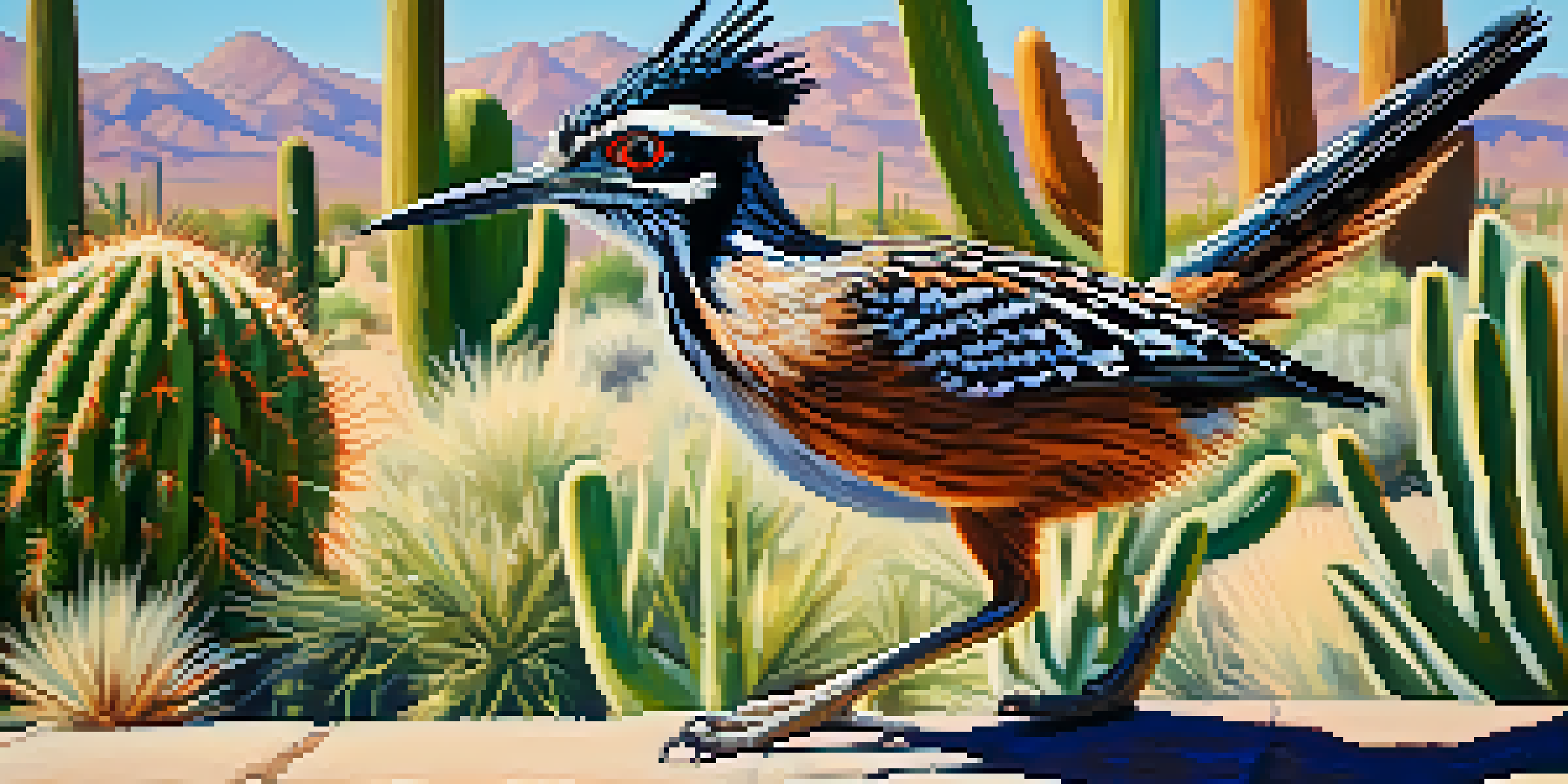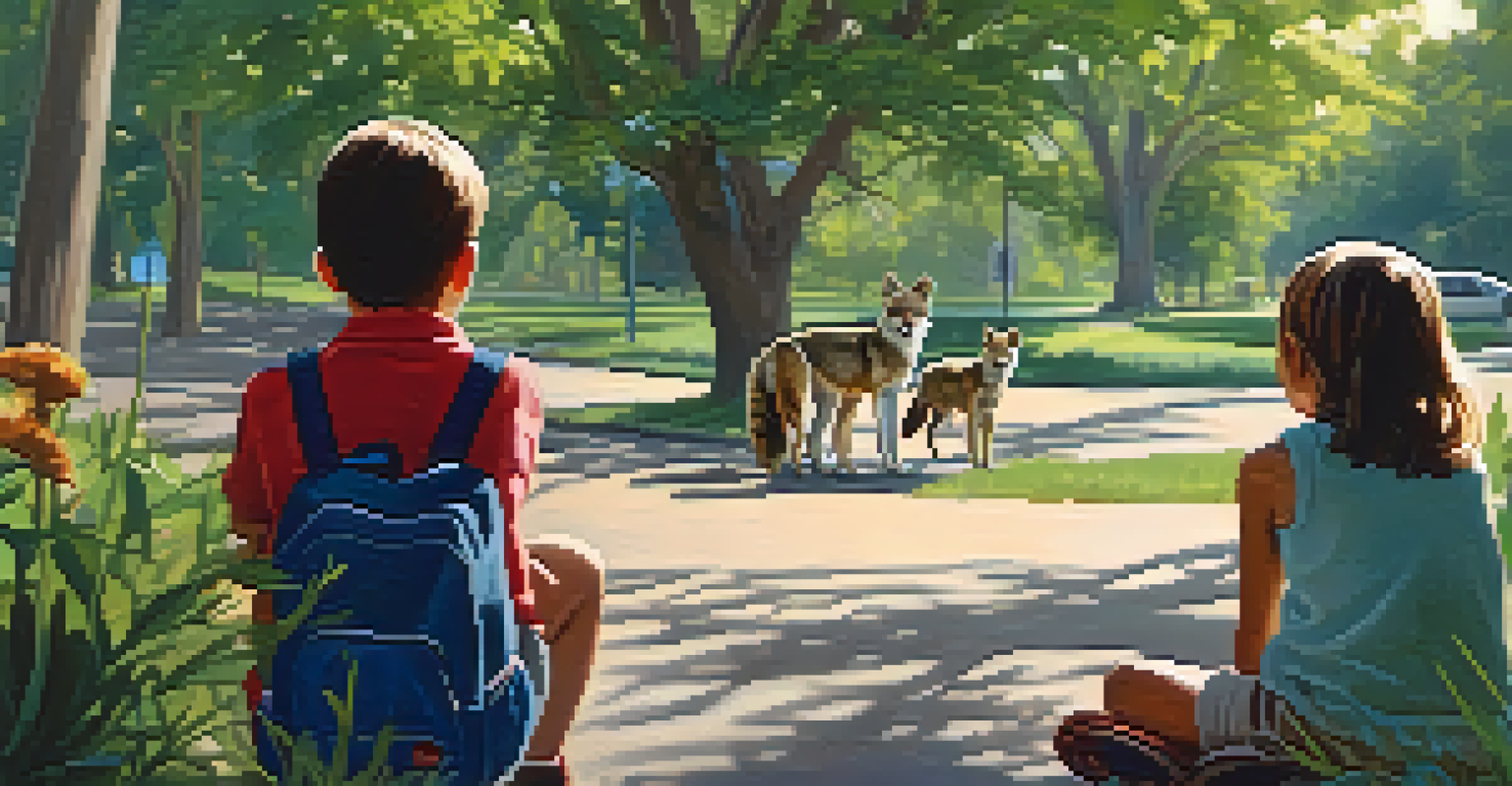The Importance of Urban Wildlife in Scottsdale's Ecosystem

Understanding Urban Wildlife in Scottsdale
Urban wildlife refers to animals that thrive in city environments, adapting to human presence. In Scottsdale, this includes species like roadrunners, coyotes, and various birds. These animals play a vital role in maintaining the ecological balance, often serving as indicators of environmental health.
The greatest threat to our planet is the belief that someone else will save it.
Many may think of wildlife as distant and removed from city life, but it’s more integrated than we realize. Urban areas can provide unique habitats that support diverse species. This adaptation highlights the resilience of nature and its ability to coexist alongside urban development.
In Scottsdale, the urban landscape offers a mix of desert flora and human structures, creating a unique ecological niche. Understanding these dynamics helps us appreciate the wildlife that shares our space and the benefits they bring to our community.
Benefits of Urban Wildlife for Biodiversity
Biodiversity is crucial for a healthy ecosystem, and urban wildlife contributes significantly to this. Diverse species work together to create a balanced environment, aiding in pest control and pollination. For instance, birds and bats help control insect populations, reducing the need for chemical pesticides.

Moreover, urban wildlife provides a genetic reservoir that can bolster resilience against diseases and environmental changes. By preserving various species, we ensure a more robust ecosystem that can withstand challenges like climate change. This diversity ultimately enriches the natural tapestry of our city.
Urban Wildlife Enhances Biodiversity
Urban wildlife plays a crucial role in maintaining biodiversity, aiding in pest control and pollination.
In Scottsdale, promoting urban wildlife habitats can enhance local biodiversity. Simple actions, such as planting native plants and creating wildlife corridors, can foster a thriving ecosystem that benefits both wildlife and residents.
Urban Wildlife and Ecosystem Services
Ecosystem services are the benefits we receive from nature, and urban wildlife offers many of them. For example, pollinators like bees are essential for the growth of fruits and vegetables, directly impacting our food supply. Urban wildlife also helps in seed dispersal, which is vital for plant regeneration.
In every walk with nature, one receives far more than he seeks.
Additionally, wildlife contributes to soil health. Animals like earthworms and insects aerate the soil, enhancing its fertility and structure. This process is crucial for maintaining green spaces in Scottsdale, ensuring they remain lush and vibrant.
Recognizing the services provided by urban wildlife encourages a greater appreciation for their presence. By fostering a coexistence mindset, we can ensure these benefits continue for future generations.
The Role of Urban Wildlife in Education
Urban wildlife serves as a powerful educational tool, especially for children. Observing animals in their natural habitat fosters curiosity and a sense of responsibility towards the environment. Schools in Scottsdale can incorporate wildlife observation into their curriculum, promoting environmental stewardship early on.
Programs that involve students in wildlife tracking or habitat restoration can deepen their understanding of ecological concepts. This hands-on experience not only builds knowledge but also cultivates a connection to nature that can last a lifetime.
Community Action Supports Wildlife
Engaging in local conservation efforts fosters a collaborative approach to preserving urban wildlife habitats.
Community workshops and events centered around urban wildlife also raise awareness among residents. By learning about local species and their roles, individuals become more engaged in conservation efforts, fostering a culture of respect and protection for Scottsdale's natural resources.
Challenges Facing Urban Wildlife in Scottsdale
Despite their importance, urban wildlife faces numerous challenges in Scottsdale. Habitat loss due to urban development is a pressing issue, as natural areas are transformed into roads and buildings. This loss disrupts migration patterns and reduces available resources for wildlife.
Human-wildlife conflict is another significant challenge. As animals venture into populated areas in search of food, they may encounter danger or be seen as pests. Finding a balance between human needs and wildlife conservation is crucial for maintaining healthy ecosystems.
To mitigate these challenges, community awareness and proactive measures are necessary. Initiatives that promote coexistence strategies can help reduce conflicts and protect the habitats that urban wildlife depend on.
Community Efforts for Urban Wildlife Conservation
Community involvement is essential for the conservation of urban wildlife in Scottsdale. Local organizations and residents can work together to create wildlife-friendly spaces, such as gardens with native plants and protected natural areas. These efforts not only support wildlife but also enhance the community's quality of life.
Volunteering for local conservation projects is a great way for residents to contribute. Whether it's participating in clean-up events or helping with habitat restoration, every effort counts in supporting the ecosystem. Engaging with these initiatives fosters a sense of pride and ownership in preserving local wildlife.
Backyard Habitats Boost Wildlife
Simple changes in your backyard, like planting native plants and providing water sources, can attract and support local wildlife.
Collaborative efforts can also lead to policy changes that benefit urban wildlife. By advocating for wildlife-friendly urban planning and sustainable practices, communities can ensure that Scottsdale remains a haven for both people and wildlife.
How to Support Urban Wildlife in Your Backyard
You don’t need to be a wildlife expert to make a difference in supporting urban wildlife. Simple steps in your backyard can create a welcoming environment for various species. Planting native plants provides food and shelter, attracting pollinators and birds.
Creating a water source, such as a birdbath or small pond, can also benefit wildlife, especially in arid climates like Scottsdale's. Water is essential for survival, and providing it can draw various animals to your yard, enhancing local biodiversity.

Taking action at home not only helps wildlife but also brings a sense of fulfillment. Watching birds or butterflies visit your yard can be a delightful experience, connecting you to the natural world right outside your door.